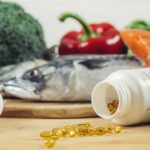Estimated reading time: 4 minutes
Are you looking for a natural way to manage persistent aches? Emerging research suggests that vitamin D for chronic muscle and joint pain may help. In recent years, people have sought natural approaches to reduce discomfort and inflammation. Vitamin D is not just essential for bones; it also supports the immune system and may play a role in reducing pain. In this article, we’ll explore how vitamin D works, why deficiency matters, and how you can maintain optimal levels safely.
Vitamin D: Key Facts
Vitamin D is a fat-soluble, hormone-like vitamin produced largely in the skin when exposed to sunlight. While it is well known for promoting strong bones, vitamin D also helps balance the immune system and control inflammation. Chronic inflammation is linked to ongoing muscle and joint pain, which is likely why maintaining adequate vitamin D levels can reduce discomfort and improve overall health. (1)
Understanding Vitamin D Deficiency
Most people get vitamin D primarily from sunlight. However, if you spend long hours indoors, wear sun-protective clothing, or live in northern regions like Edmonton, it’s easy to fall short – especially in fall and winter. Low sun exposure can lead to vitamin D deficiency, which is common in North America. (2, 3, 4) Deficiency may increase sensitivity to pain and contribute to conditions like fibromyalgia, osteoarthritis, and chronic back pain.
Vitamin D and Pain
Research shows a connection between low vitamin D levels and chronic pain. Adequate vitamin D can help reduce inflammation, which is a key driver of pain. Studies since 2014 indicate that supplementation may improve pain symptoms in a variety of conditions, while only a few studies show minimal effect. (5, 6, 7, 8, 9, 10, 11, 12, 13, 14, 15, 16) Even so, ensuring your vitamin D levels are within a healthy range is a simple and potentially powerful step in managing chronic muscle and joint pain.
Getting Enough Vitamin D
Sunlight
The most natural way to boost vitamin D is through sunlight. Our ancestors spent much of their day outdoors, but modern lifestyles often limit sun exposure. Factors like stress, obesity, older age, and chronic inflammation also reduce the body’s ability to convert sunlight into vitamin D efficiently. (17, 18, 19, 20)
Food Sources
Food contributes only a small portion of daily vitamin D. Some rich sources include:
- Cod liver or cod liver oil
- Fatty fish: salmon, mackerel, herring, sardines, trout, tuna
- Egg yolks (pasture-raised eggs contain more vitamin D than conventional eggs)
Supplements
Because sunlight and food alone may not be enough, supplements are often recommended. Before starting, it’s best to check your vitamin D levels. If testing is challenging, some practitioners suggest a daily dose of around 4,000 IU for adults. Ideally, levels should be monitored every 3–6 months to ensure safety and effectiveness. A healthy blood range is roughly 75–150 nmol/L (30–60 ng/mL). (21, 22, 23, 24, 25)
Avoiding Toxicity
Too much vitamin D can cause toxicity, leading to nausea, kidney stones, heart issues, or tissue calcification. Supporting nutrients, particularly vitamin A and vitamin K2, help prevent complications. Foods rich in vitamin A include liver, cod liver oil, egg yolks, and orange vegetables. Vitamin K2, found in natto, cheeses like Gouda and Brie, and pastured egg yolks, is more difficult to get from diet alone, so supplementation (around 200 mcg/day MK7) is often recommended.
Working With Your Healthcare Provider
Before adding vitamin D supplements for pain relief, consult your healthcare provider. They can guide you on dosing, monitor your levels, and help optimize your approach safely. In Canada, testing may require a functional medicine or naturopathic provider if your doctor cannot order it easily.
Here is the vitamin D (vitamin D3) supplement I take:
Here is the vitamin K2 I take:
These can be found in my dispensary, at my clinic, or at health food and supplement stores.
Conclusion
Vitamin D for chronic muscle and joint pain is a promising natural strategy. Its role in reducing inflammation and supporting overall health makes it a safe, practical option to consider alongside other pain management strategies. By combining sunlight, diet, and supplementation, you can help maintain healthy vitamin D levels and potentially ease chronic pain. Speak with your healthcare provider today to see if vitamin D is right for you.
To learn more about how chiropractor care can help you and your family, read Dr. Collins’ comprehensive guide to chiropractic care: Chiropractic Care for Everyone.
For a healthy spine and nervous system, contact Edmonton chiropractor Dr. Dean Collins. Or book a consult and exam with him today.
Sign up for our Dr. Collins’ newsletters and blog posts
Sign up Dr. Collins’ newsletters to receive vital information on how to keep your spine and nervous system healthy as well as how to help optimize your health and avoid chronic illness.



Leave a Reply